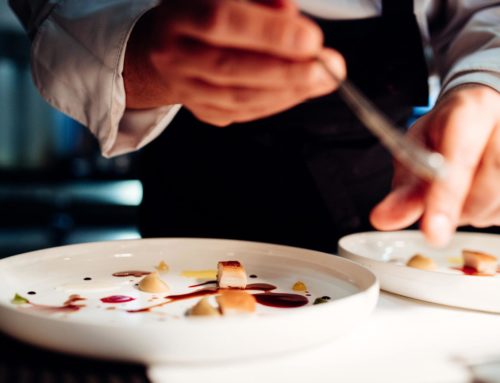Summer Travel Hot Spots
Interested in a little architectural tourism this summer? Check out this list from our friends at Curbed.com. Check out the complete list of summer travel hot spots here.
San Francisco, CA
Even when it’s shrouded in the Bay Area fog, this 1.7-mile suspension bridge, arguably the most famous in the country, still attracts cyclists, crowds, and onlookers marveling at one of San Francisco’s most recognizable symbols. Learn more about this infrastructure marvel at Curbed San Francisco, then plan a visit.
:no_upscale()/cdn.vox-cdn.com/uploads/chorus_image/image/60246121/shutterstock_136918865.0.jpg)
2. Hallidie Building
San Francisco, CA 94104
It may seem a little short to be the forerunner of today’s skyscrapers, but when it was built in 1918, the Hallidie Building was the first of its kind with a glass facade. A recent multi-year restoration project restored a bit of the nearly century-old structure’s shine.
:no_upscale()/cdn.vox-cdn.com/uploads/chorus_image/image/60246123/hallillde_20.0.0.0.jpg)
3. SFMOMA
San Francisco, CA 94103
According to Curbed San Francisco editor Brock Keeling, this long-anticipated expansion of one of the city’s signature cultural institutions is both an “unabashed success” and “standout in the neighborhood.” Snøhetta’s 10-story contoured facade, an update on the classic Mario Botta building, was inspired by San Francisco’s characteristic fog and choppy Bay waters.
:no_upscale()/cdn.vox-cdn.com/uploads/chorus_image/image/60246125/30SFMOMA-facebookJumbo.0.0.0.0.jpg)
4. Space Needle
Seattle, WA 98109
One of the symbols of Seattle, this space-age observation tower, built for the 1962 World’s Fair, is in the midst of a $100 million renovation set to finish this summer. Late in July, visitors will be able to check out a new observation deck, complete with a glass floor.
:no_upscale()/cdn.vox-cdn.com/uploads/chorus_image/image/60246127/shutterstock_133656629.0.jpg)
5. Gas Works Park
Seattle, WA 98103
A revolutionary creative reuse project, this Seattle park, designed by architect Richard Haag, reimagined a coal gasification plant on the city’s waterfront as an active park and children’s play place. Landscaping and repurposing of different sections of the abandoned industrial facility have made this one of the more unique parts of the city’s landscape.
:no_upscale()/cdn.vox-cdn.com/uploads/chorus_image/image/60246129/Gas_Works_pano_01.0.0.0.0.jpg)
6. Hearst Castle
San Simeon, CA 93452
The inspiration for Xanadu in Orson Welles’s classic film Citizen Kane, William Randolph Hearst’s castle in San Simeon was built on family land where he would take camping trips as a child. Architect Julia Morgan designed the ranch and hilltop estate based on the newspaper tycoon’s eclectic tastes, including Spanish themes. “La Cuesta Encantada” (“The Enchanted Hill”) became a sprawling enterprise, complete with the nation’s largest private zoo, a movie theater, the Neptune Pool (which contained the façade of a Roman temple Hearst imported from Europe) and a private power plant. A perfectionist, Hearst often ordered different sections to be redesigned and rebuilt; Morgan started pitching ideas in 1915, but the project still was incomplete by the time Hearst died in 1951.
:no_upscale()/cdn.vox-cdn.com/uploads/chorus_image/image/60246131/hearst_castle.0.0.0.0.jpg)
7. The Majestic Yosemite Hotel
YOSEMITE NATIONAL PARK, CA 95389
One of the defining examples of “parkitecture,” the rustic style of design found throughout the National Park System, the Yosemite Hotel (formerly the Ahwahnee Hotel) has hosted generations of tourists. Designed by Gilbert Stanley Underwood in 1927, the building was made to match its surroundings, and reflects the natural splendor that makes Yosemite so compelling.
:no_upscale()/cdn.vox-cdn.com/uploads/chorus_image/image/60246133/29771565513_efa7790397_k.0.0.jpg)
8. Eames House
Pacific Palisades, CA 90272
Anybody convinced that modern design means cold edges and a stark palette need only peek inside the exuberant home Ray and Charles Eames designed for themselves in 1949. Commissioned as part of Art & Architecture magazine’s Case Study program and placed amid a eucalyptus grove in the Pacific Palisades, the prefab exterior, a Mondrian-like assembly of off-the-shelf parts—colorful panels, glass, and steel—conceals a playful and living room. The inspiring, oft-photographed space, an artful array of toys, tchotchkes, and furniture reassembled piece-by-piece as part of the epic “California Design” exhibit, embodies the couple’s imaginative and all-encompassing design philosophy.
:no_upscale()/cdn.vox-cdn.com/uploads/chorus_image/image/60246135/eames_house.0.0.0.0.jpg)
9. Sheats-Goldstein House
Los Angeles, CA 90210
The LA County Museum of Art’s first-ever architecture acquisition, the Sheats-Goldstein House high in the hills of Beverly Crest, designed by John Lautner and owned and loved for decades James Goldstein, is one of the most spectacular houses in Los Angeles: triangular concrete jaws held open by walls of glass, and filled with transparent sinks, built-in leather furniture (including a bed), outdoor corridors with no rails, and windows that look into the pool.
:no_upscale()/cdn.vox-cdn.com/uploads/chorus_image/image/60246137/2011_07_LAUTNER_SHEATS_GOLDSTEIN-71.0.0.0.jpg)
10. Schindler House
West Hollywood, CA 90069
A radical departure from architectural convention at the time it was built in 1922, R.M. Schindler’s experiment in shared space, separated by sliding glass panels, came from an unlikely inspiration: a vacation village at Yosemite National Park. The layout of those shared campsites gave Schindler the idea of creating a live-work space appropriate for two families, a pair of L-shaped apartments with two studios and a utility room apiece. While it may not look it from the road, the home’s then-unique blurring of interior and exterior created a precedent, Also known as the Schindler Chace House, since his friend Clyde Chace and his wife were the first family to share the home with Schindler (Richard Neutra was next), this unique building was a early Modernist classic.
:no_upscale()/cdn.vox-cdn.com/uploads/chorus_image/image/60246139/schindler_house.0.0.0.0.jpg)
Get in Touch with Mario, Your Miami Realtor
I’m Mario Quintero, your mortgage & realtor for life. Let me be your Miami home consultant. STC Loans has been able to grow a repeat and satisfied clientele because we offer lending services traditional banks do not. Our office specializes in both residential and commercial real estate and financing programs. Let me help you secure a conventional, jumbo, FHA and foreign national mortgage loans. Furthermore, we can help your elderly parents secure a comfortable retirement with a reverse mortgage.
Call me today at 305-598-1600, via email at mario@stcloans.com or contact me here. Let’s find your dream home or refinance your property!



